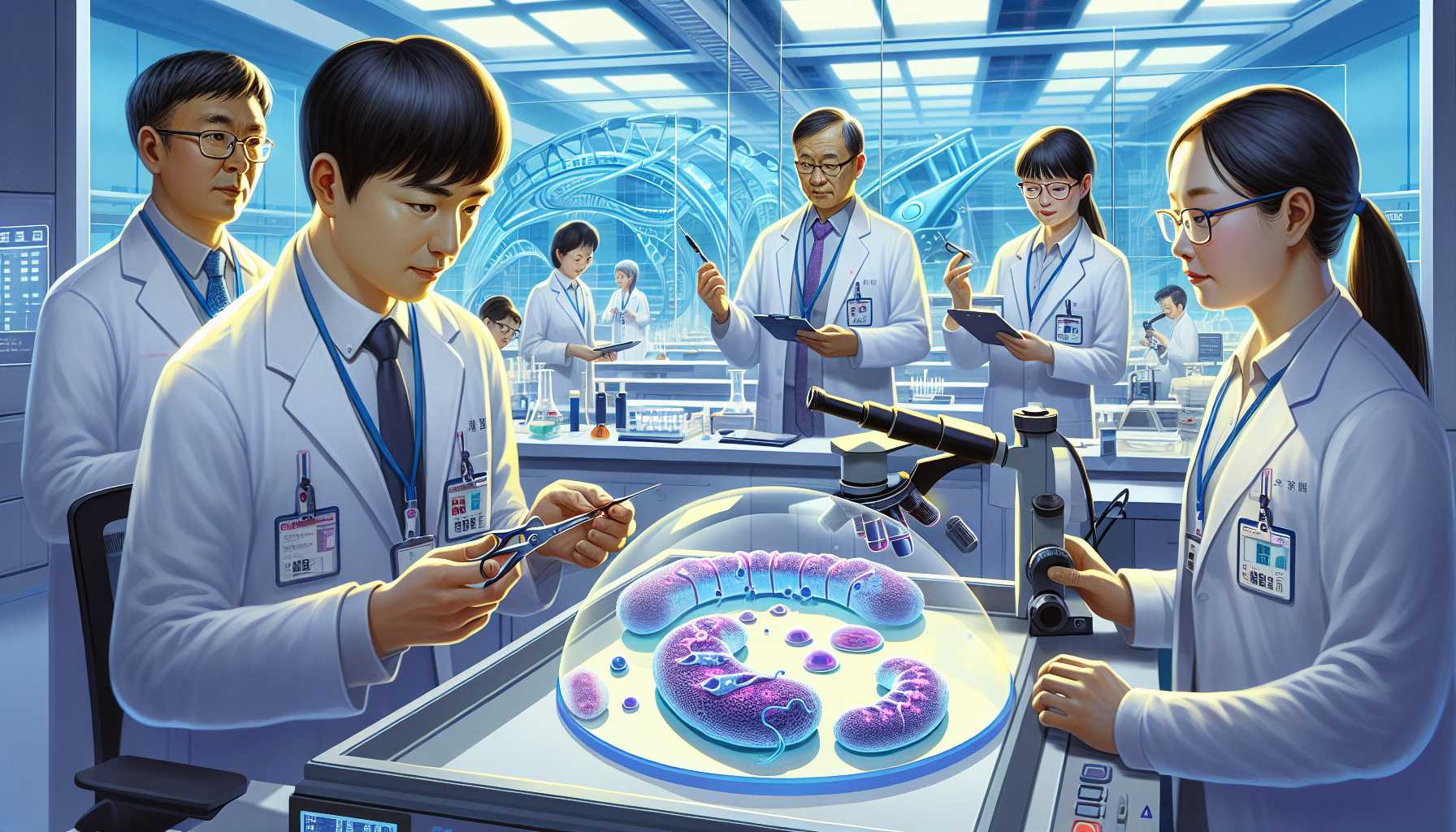
Breakthrough Stem Cell Therapy for Diabetes Treatment
Chinese medical researchers claim to have made a significant breakthrough in the treatment of diabetes through a novel cell therapy method.
Chūgoku no iryō kenkyūsha-tachi wa, atarashī saibō ryōhō no hōhō o tsūjite, tōnyōbyō no chiryo ni oite jūyō na shinten o togeta to shuchō shiteimasu.
中国の医療研究者たちは、新しい細胞療法の方法を通じて、糖尿病の治療において重要な進展を遂げたと主張しています。
This innovative technique involves using stem cells to regenerate insulin-producing pancreatic beta cells, which are often damaged or destroyed in diabetes patients.
Kono kakushinteki na gijutsu wa, tōnyōbyō kanja de shibashiba sonshō matawa hakai sareru insurin o seisei suru suizō no bēta saibo o saisei suru tame ni kan saibo o shiyō suru koto o fukumi masu.
この革新的な技術は、糖尿病患者でしばしば損傷または破壊されるインスリンを生成する膵臓のベータ細胞を再生するために幹細胞を使用することを含みます。
According to the team from the First Affiliated Hospital of Nanchang University, their approach has shown promising results in clinical trials, potentially offering a more effective and long-lasting solution compared to traditional diabetes treatments, such as insulin injections.
Nanchang daigaku no daiichi fuzoku byōin no chīmu ni yoru to, karera no apurōchi wa rinshō shiken de yūbō na kekka o shimeshite ori, insurin chūsha nado no jūrai no tōnyōbyō chiryo to hikaku shite, yori kōka-teki de nagatsuzuki suru kaiketsu-saku o teikyō suru kanōsei ga arimasu.
南昌大学の第一附属病院のチームによると、彼らのアプローチは臨床試験で有望な結果を示しており、インスリン注射などの従来の糖尿病治療と比較して、より効果的で長続きする解決策を提供する可能性があります。
The researchers emphasize that this cell therapy not only aims to improve blood sugar control but also strives to restore the body's natural ability to regulate insulin production.
Kenkyūsha-tachi wa, kono saibō ryōhō ga kettōchi no kanri o kaizen suru koto o mokuteki to suru dake de naku, insurin no seisei o chōsei suru karada no shizen na nōryoku o kaifuku suru koto ni mo doryoku shite iru to kyōchō shiteimasu.
研究者たちは、この細胞療法が血糖値の管理を改善することを目的とするだけでなく、インスリンの生成を調整する体の自然な能力を回復することにも努力していると強調しています。
If further tests confirm the efficacy and safety of this treatment, it could represent a significant advancement in diabetes management and possibly lead to a cure for the condition.
Moshi saranaru tesuto ga kono chiryo-hō no yūkō-sei to anzen-sei o kakunin sureba, sore wa tōnyōbyō kanri ni okeru jūyō na shinten o shimeshi, kono shikkan no chiryo ni tsunagaru kanōsei ga arimasu.
もしさらなるテストがこの治療法の有効性と安全性を確認すれば、それは糖尿病管理における重要な進展を示し、この疾患の治療につながる可能性があります。
While the findings are encouraging, experts warn that more extensive research and clinical trials are needed before the therapy can be widely adopted.
Kekka wa hagumi ni narimasu ga, senmonka wa, kono ryōhō ga hiroku saiyō sareru mae ni, yori kōhan na kenkyū to rinshō shiken ga hitsuyō de aru to keikoku shiteimasu.
結果は励みになりますが、専門家は、この療法が広く採用される前に、より広範な研究と臨床試験が必要であると警告しています。
The hopes surrounding this breakthrough reflect a growing interest in regenerative medicine and its potential to transform the treatment landscape for chronic diseases like diabetes.
Kono burēkusurū ni yoserareru kitai wa, saisei iryō ni taisuru kanshin no takamari to, tōnyōbyō no yō na mansei shikkan no chiryo no fūkei o kaeru kanōsei o han'ei shiteimasu.
このブレークスルーに寄せられる期待は、再生医療に対する関心の高まりと、糖尿病のような慢性疾患の治療の風景を変える可能性を反映しています。
Based on this article
